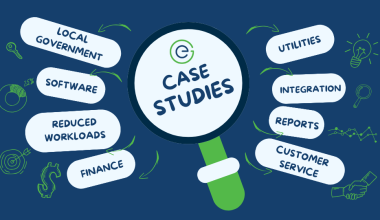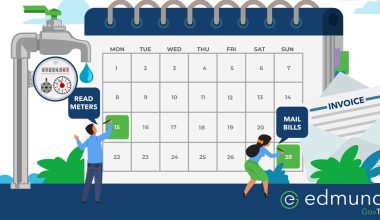Recently, a new newsletter subscriber emailed me and asked:
“We are searching for any information that would support (or not) investing in radio read meters. Our Board has already voiced the opinion they won’t pay for themselves. Can you offer any advice on various areas of savings/cost you have seen after purchasing and installing such a system?”
Having completed a business review and Return on Investment (ROI) analysis for a municipal water system, this reader’s question made me realize this is a great topic for a newsletter.
If you’ve already upgraded to an AMI or AMR system, please don’t stop reading. You can do me a favor as you’ll see below.
What is an ROI analysis?
An ROI analysis compares the expenses of implementing something new, in this case an automated meter reading system, to the increased revenue and cost savings achieved and derives a pay-back period for the system. Both one-time and recurring expenses and revenues are included in the analysis.
Costs of implementing an AMR/AMI system
The costs associated with implementing an automated meter reading system include:
Purchasing new radio read meters
The single largest cost associated with implementing a radio read metering system is, of course, the new radio read meters. Be sure to take a census of the meter sizes and types currently installed and ensure that you are using the proper cost associated with each size or type of meter.
Purchasing new meter boxes or meter box lids, if required
When dealing with water meters, existing meter boxes may be too small or, in some cases, metal meter boxes or lids may interfere with the radio signal.
Labor cost to install the new meters
The second-largest cost incurred with implementing radio read meters is the installation of the meters. Will you use an outside contractor or will your field service staff install them?
Purchasing the meter reading software
Don’t forget to include the cost of the new meter reading software. In addition, be sure to include the ongoing annual maintenance for the software as a recurring cost in your ROI analysis.
Upgrading your billing software upgrade, if necessary
Finally, if your billing software isn’t compatible with radio reading, or if you need to purchase an additional module, be sure to include that cost. As with the meter reading software, be sure to include any increase in annual maintenance as a recurring cost.
Increased revenues and cost savings
Increased revenues and cost savings associated with implementing an automated meter reading system include:
Sale of scrap meters
The only one-time revenue source from implementing a radio read system is the sale of the old meters (and meter boxes, if applicable) as scrap.
Revenue gain from new meters
The area most utilities rely on to cost-justify a radio read meter system is the increased revenue from installing new meters. Especially with water meters, meters are known to register less usage as they get older. Remember, meters are like people – they slow down with age.
The revenue gain from new meters is also the area where your ROI analysis can be the most deceiving, if you assume revenue increases that don’t materialize. Two areas where your analysis can go wrong are:
- unreasonable assumptions about how much your existing meters have slowed down
- rate elasticity – as the price increases, usage decreases
One way to try to ensure your assumptions about the inefficiency of your current meters is to conduct a pilot meter replacement policy. This would involve replacing a sampling of meters of different ages and sizes and observing the increase in usage over several billing periods.
Staff time savings from no longer reading meters
The biggest cost savings associated with implementing a radio read meter system is the reduced time involved in reading meters each month. If you are moving to an AMI system, you will save 100% of the current time, vehicle use, and gas. If you are moving to an AMR system, you will still incur some time and expense for meter readers to drive the routes, but it will be much less than walking the same routes.
Reducing time for re-reads
In theory, a radio read system will provide accurate readings, without the element of human error which is present when using handhelds or reading on paper. In reality, there will always be some meters that aren’t transmitting properly, which will require follow-up from your field service staff. Hopefully, the time to check these non-transmitting meters should be less than what is currently being spent re-reading meters with questionable readings.
Savings from not offering of leak adjustments
If you’re implementing an AMI system and plan to do proactive leak detection, I recommend adopting a policy of not offering leak adjustments. In this case, you will save the lost revenue associated with leak adjustments.
Completing the ROI analysis
Once you’ve arrived at all of your one-time and recurring costs, increased revenues and cost savings, you are ready to complete the ROI analysis. This involves calculating the net up-front cost (one-time expense less one-time revenues) and dividing it by the annual increased revenue and cost savings. The final number will be the payback period in years.


